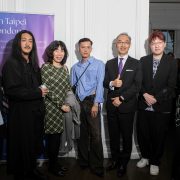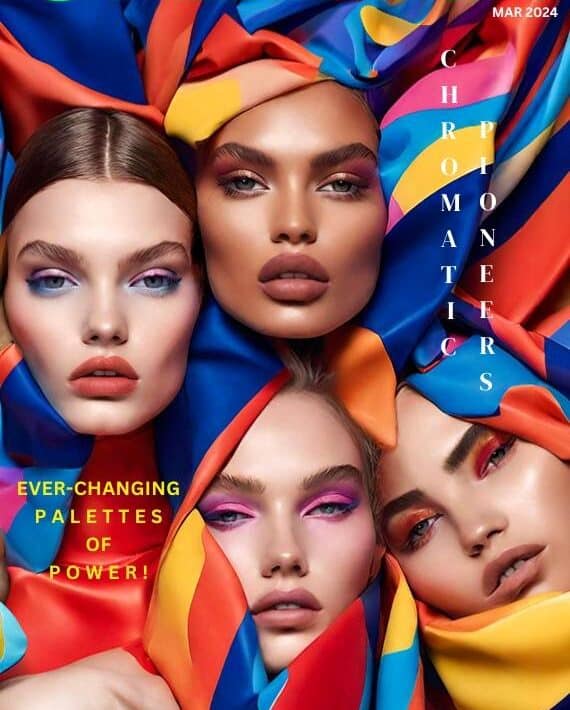Exploring the Intersection of Fashion and Interior Design

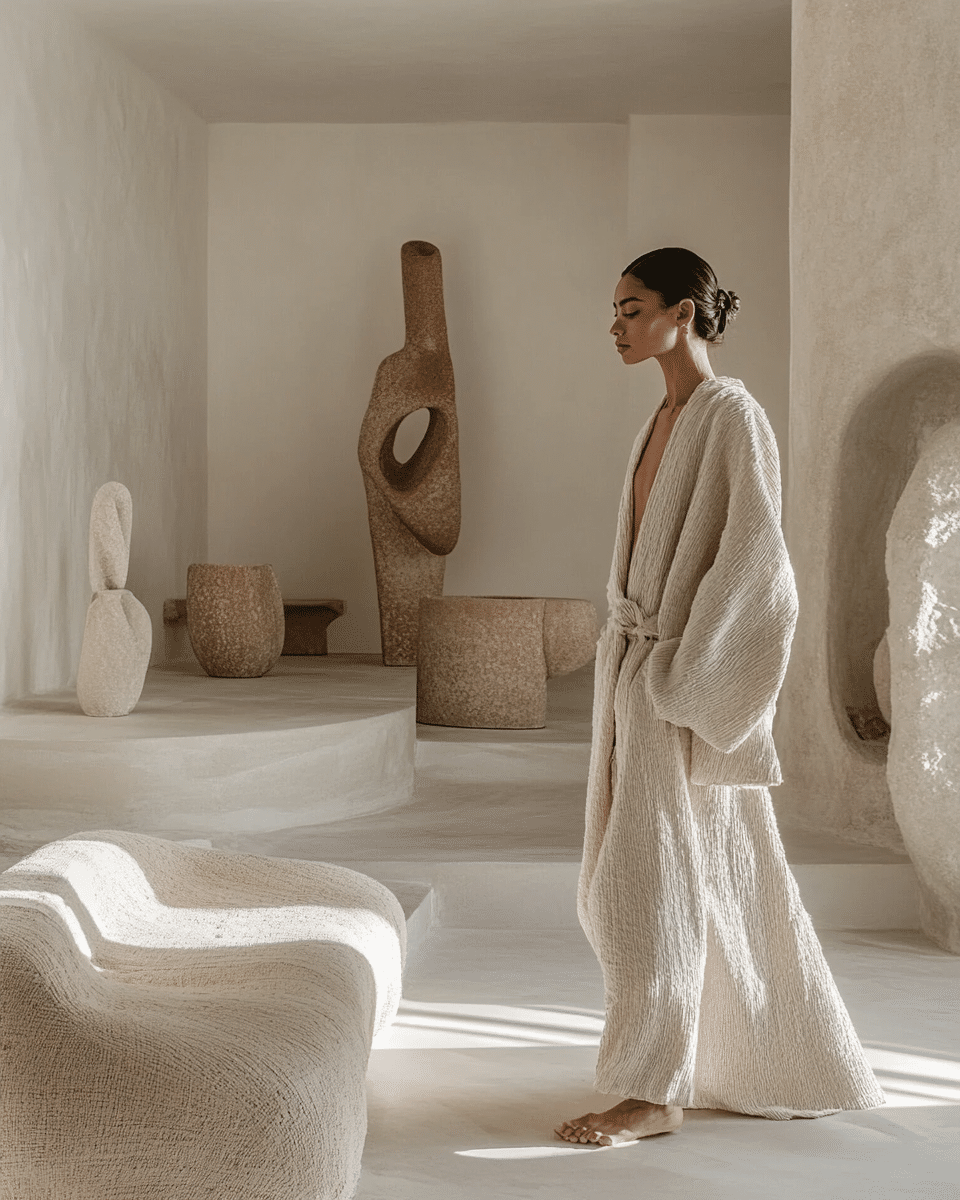
How Fashion and Interior Design are evolving hand in hand to meet the demands of a more conscious and thoughtful society
Fashion and Interior Design have always been interconnected, often drawing inspiration from one another. Recently, both fields have focused on similar themes that resonate with today’s societal and cultural shifts. These themes—Experiential Wellness, Minimalism, Redefined Craftsmanship and Spiritual Aesthetic Experience—reflect a shared vision for creating environments and styles that prioritize well-being, sustainability and meaning.
Quiet Interiors & Fashion Quiet Luxury

Layout By Dr. Manuela Pirola; Image Source: Tagwalk
As ascertained during Milan Design Week 2025, Designers and Architects are emphasizing the creation of calm, reassuring spaces. In a fast-paced world, these interiors invite individuals to relax and rejuvenate in environments designed for peace and tranquillity. The use of rounded embracing shapes, along with extraordinary materials, such as bouclé, natural leather and deep velvet, is essential, as these forms and textures convey serenity with a nod, of course, to sustainability. The neutral palettes and natural materials further enhance this sense of calm. Other key features for Quiet Interiors include upholstered elements (proposing soft, tactile materials that invite touch), woven cushions (adding a touch of warmth and comfort) and, last but not least, conceptual forms, with designs that inspire contemplation and emotional well-being.

Layout By Dr. Manuela Pirola; Image Source: Tagwalk
Similarly, in fashion, experiential wellness is about creating garments that not only look good but also make the wearer feel good. Designers are increasingly using natural, breathable fabrics. Clothing is designed to promote relaxation, comfort, and a sense of balance, contributing to the wearer’s overall well-being. The world of fashion is increasingly conscious also of the environmental impact of their clothing choices and are seeking out options that align with their values. This has intensified the use of natural fabrics, which are not only eco-friendly but also offer unique textures and qualities: leather, for instance, a material with a rich history, is at the forefront of this sustainable shift. When sourced responsibly, leather is a durable and biodegradable material that ages beautifully over time. Many designers are now prioritizing vegetable-tanning processes and ethical sourcing to ensure that their leather products are as sustainable as they are stylish.
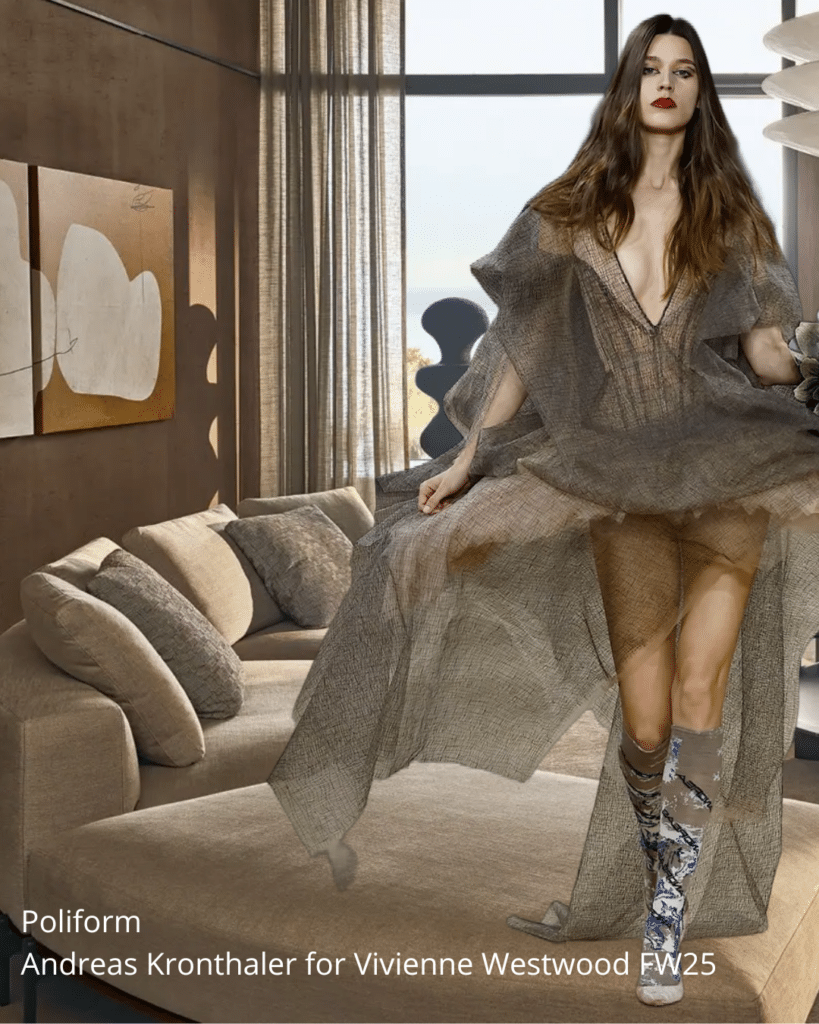
Layout By Dr. Manuela Pirola; Image Source: Tagwalk
Collectible Ceramics & Fashion Craftsmanship
Another trend, among those recently emerged at Milan Design Week, highlights the allure of ceramics as both functional and decorative objects. Industrial design is increasingly offering “collectible” moments through ceramics, a material cherished by designers and artists alike. Again, artisan craftsmanship creates unique, handcrafted pieces that tell a story. The use of raw clay metaphorically embraces the natural imperfections and textures: no two pieces of ceramic or pottery are exactly the same, even when crafted from the same batch of material. This imperfection is part of what makes each piece unique and special. This reminds us that imperfections are not flaws but rather characteristics that define individuality and authenticity. Colorful vases, instead, provide a tactile and visual delight, adding vibrancy and personality to spaces.
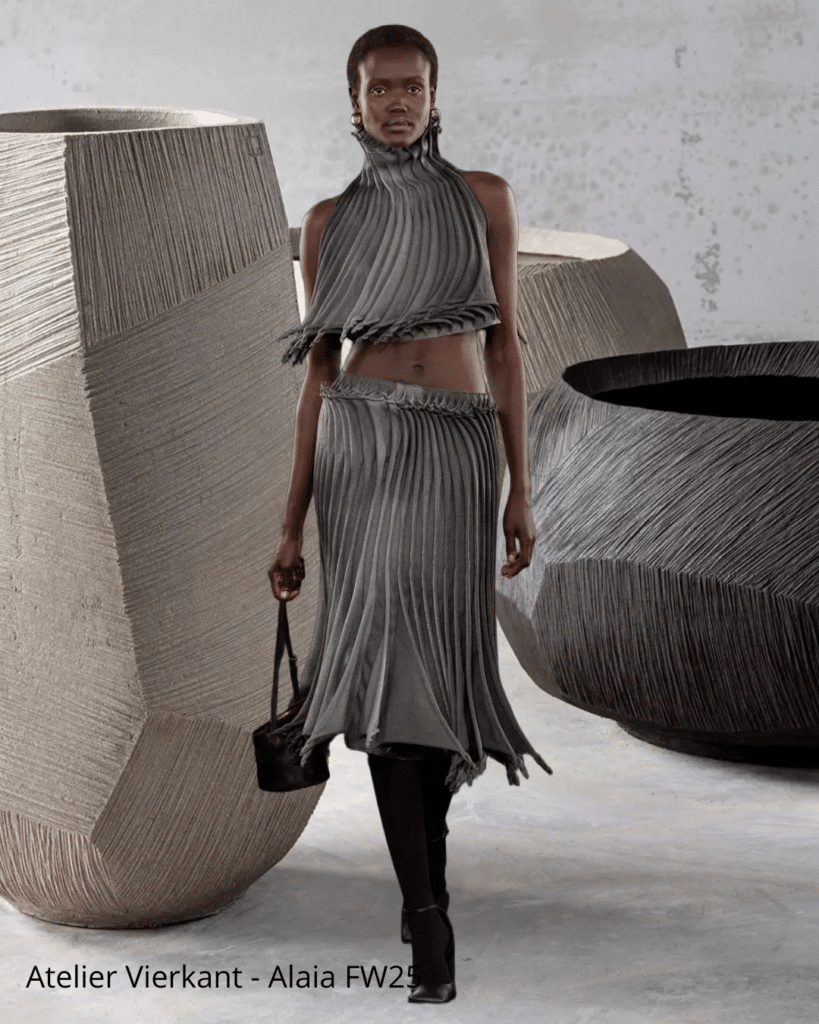
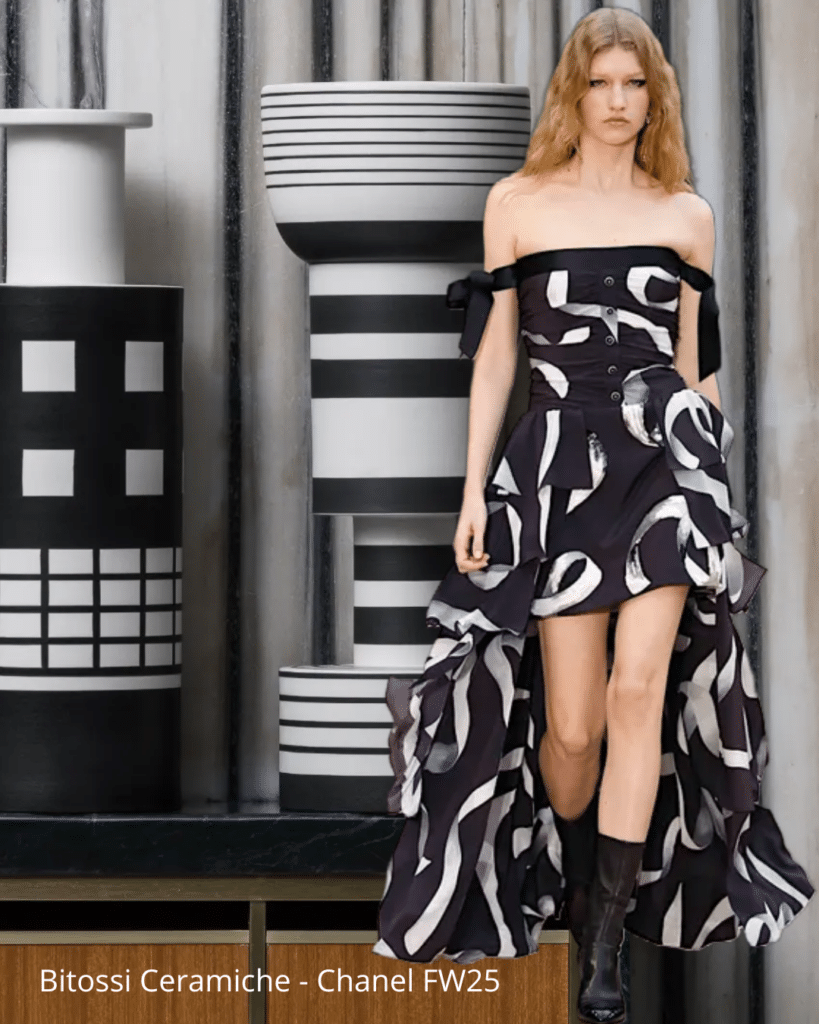
Layout By Dr. Manuela Pirola; Image Source: Tagwalk
Likewise, in the realm of fashion, redefined craftsmanship involves a renewed focus on traditional techniques and artisanal skills. Designers are celebrating the art of making by collaborating with skilled craftspeople and using time-honored methods to create unique, high-quality pieces. This movement champions slow fashion, valuing the story and effort behind every garment. The so-called Holistic Philosophy in fashion highlights a deeper respect for ancestral traditions and artisanal skills. The emphasis is on materials sourced from the earth and treated with purpose, ensuring each piece offers a soothing, spiritual and aesthetic experience. This collective desire for simplicity and clarity redefines luxury by prioritizing quality, precision and craftsmanship over abundance. This shift towards embracing heritage is not only a reference to the past but also a step forward in the pursuit of sustainability and the use of natural materials, with leather being a prime example.
In recent years, there has been a growing appreciation for the rich tapestry of ancestral traditions in fashion. Designers and consumers alike are looking back to the past to find inspiration in the techniques and styles that have been passed down through generations. Artisans play a crucial role in this movement, bringing to life the intricate skills and meticulous attention to detail that mass production often overlooks. From hand-embroidered textiles to bespoke tailoring, these craftspeople are the custodians of techniques that have endured for centuries. Their work is a testament to the beauty of craftsmanship that cannot be replicated by machines.
Postmodern Totems
“Postmodern Totems”, in Interior Design, refers to the introduction of objects with totemic forms that mystify their function. These geometric sculptures, abundantly displayed at Milan Design Week, create a bridge between art and utility, challenging perceptions and encouraging curiosity. Totemic objects are items within a space that hold symbolic or spiritual significance. They might be artifacts, sculptures, paintings, or any kind of object that has a story or meaning attached to it. These objects can be personal heirlooms, culturally significant items, or pieces that simply evoke a strong emotional response. In the realm of interior design, totemic objects are more than just decorative pieces; they are imbued with meaning, history, and personal significance. These objects can transform a space, creating a unique narrative that resonates with the inhabitants.
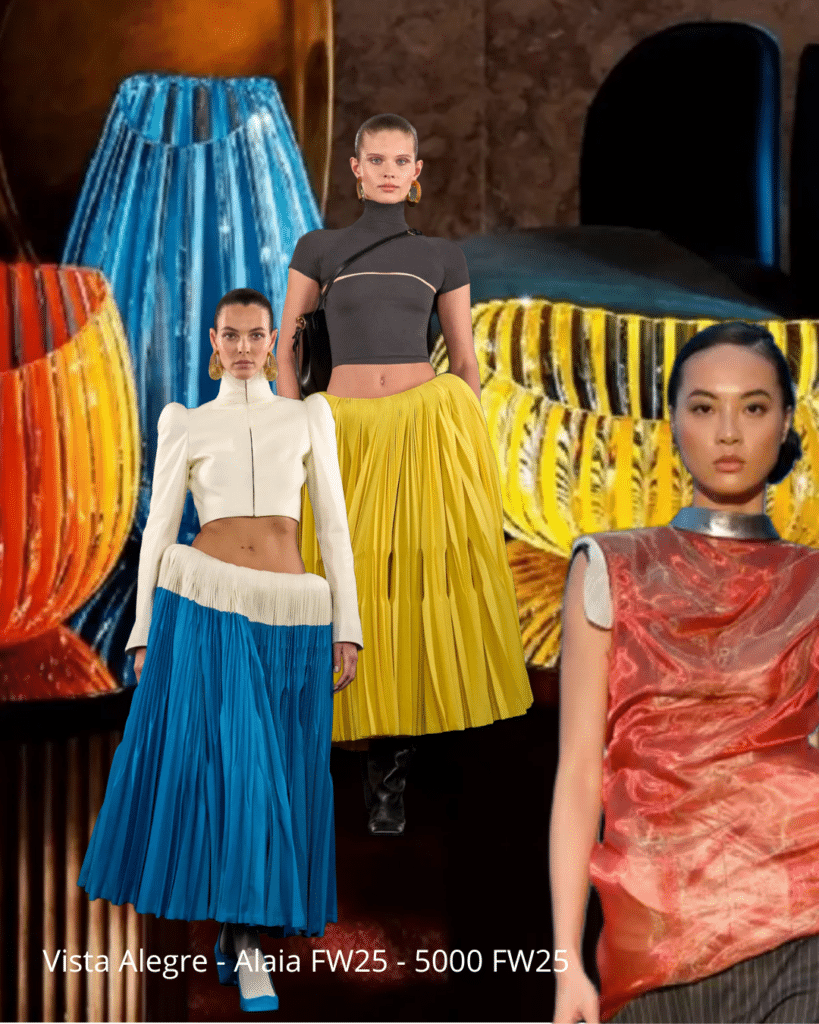
Layout By Dr. Manuela Pirola; Image Source: Tagwalk
Sharing the same perspective as interior design, postmodern totemic design in fashion serves as a powerful form of expression that transcends cultural boundaries. By merging the rich symbolism of totems with the dynamic nature of postmodernism, designers create garments that are not only visually striking but also intellectually engaging. This approach encourages a deeper understanding of cultural identity, globalization, and the ever-evolving narrative of fashion. It represents a fusion of cultural symbolism and modern aesthetics. Designers combine motifs from various cultures, creating a tapestry of symbols that defy singular interpretation. Postmodern totemic fashion often incorporates a playful approach to design, encouraging innovation and creativity in the use of shapes, colors and textures, requiring viewers to engage actively with the symbolism to uncover the narratives woven into the design.
To conclude we can say that both Fashion and Interior Design are evolving to meet the demands of a more conscious and thoughtful society. By focusing on experiential wellness, minimalism, redefined craftsmanship, spiritual aesthetics, they are not only enhancing the way we dress and decorate our spaces but also enriching our lives in profound ways.


